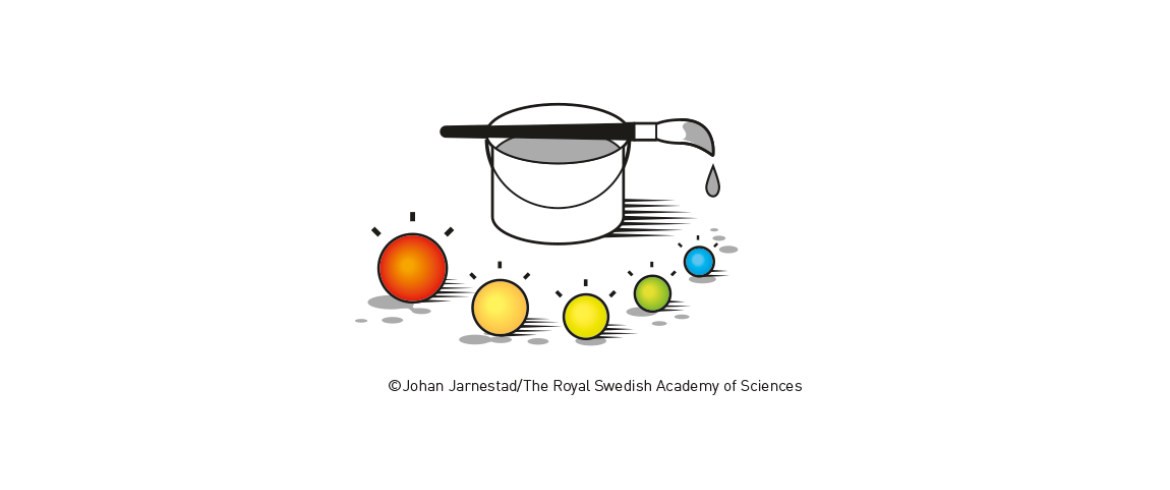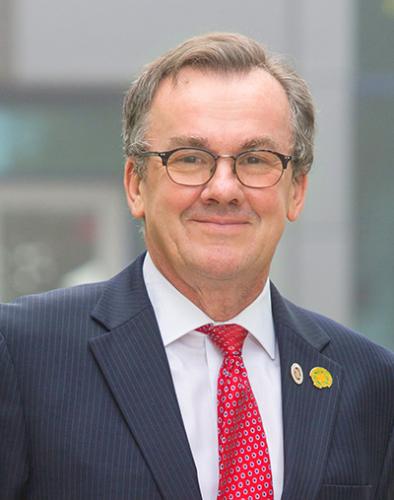
Illustration from Nobel Prize organization to illustrate quantum dots © Johan Jarnestad/The Royal Swedish Academy of Sciences
The Nobel Prize in Chemistry 2023 was just awarded to three renowned scientists for the development of quantum dots—nanoparticles so small that their properties are determined by quantum phenomena—or their size instead of the number of electrons in the element.
Quantum dots are now used to illuminate televisions and computer screens, LED lamps, and help guide surgeons in removal of tumor tissue. An early collaborator on part of the work is a researcher (and former dean) at the nation’s only joint college of engineering.

Lou Brus is one of the Nobel Laureates awarded for the work. In 1984 while at Bell Laboratories, he authored a paper* on the subject showing that quantum dots could be made with the desired size and structure.
One of his collaborators was J. Murray Gibson, now Professor of Mechanical Engineering at FAMU-FSU College of Engineering, Florida A&M University and Florida State University. Professor Gibson explained that his role was the high-resolution electron microscopy in the earliest paper documenting the work, which verified the size, shape, crystallography and composition of the dots. This led to the conclusion about their important optical properties being due to quantum-confined bandgaps. The work was done at Bell Laboratories in 1983 and is referenced in the Nobel citation. It was clearly a significant milestone in the development of quantum dots.
“It brings back fond memories of working with Lou’s team at Bell Labs in the early ‘80s,” Gibson said. “It really was an amazing environment with such talent. What made Bell Labs so special was the freedom to do what you chose to in research, combined with immersion in a problem-rich environment. Not surprising that the institution invented the transistor, the laser and the cell phone! We need to reproduce this environment today for young researchers.”
*Size effects in the excited electronic states of small colloidal CdS crystallites; R. Rosetti, J.L. Ellison, J.M. Gibson, and L.E. Brus, Journal of Chemical Physics, Vol.80, pp 4464-4469, 1984

RELATED ARTICLES
Engineering dean visits France to serve as a judge at the ‘Investissements D’Avenir’ program
Gibson announces plan to step down as Dean, FAMU-FSU College of Engineering
